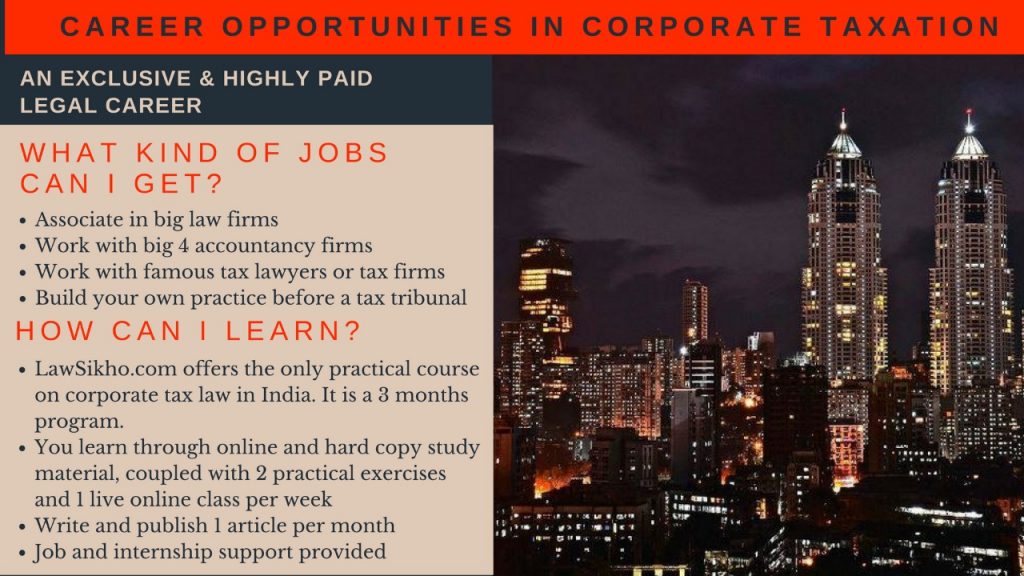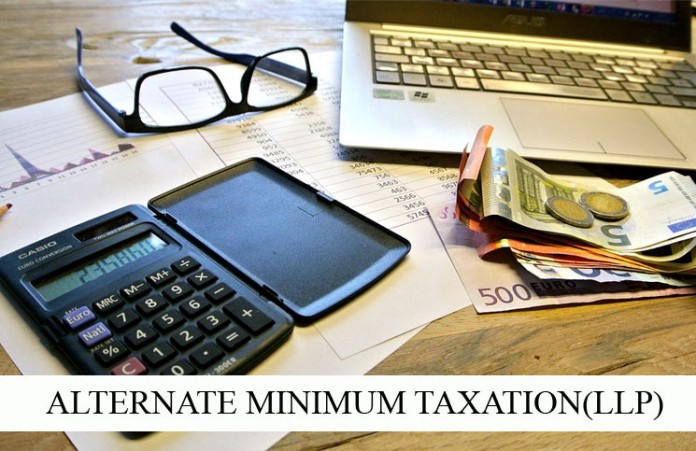This article is written by Ruchi Jain, a student of MATS Law School, Raipur, on Alternate Minimum Taxation on Limited Liability Partnership.
Introduction
LLP or Limited Liability Partnership is a form of business having features of both partnership and of a company. As soon as the LLP Act came into existence the need for the change in taxation regime in respect of the income of LLP was essential to give certainty. All the provisions of Income Tax Act, 1961 which are applicable on firm, partner and partnership shall also be applicable on LLP and partner of LLP unless otherwise provided in the Act.
Therefore LLP shall pay tax @ 30.09% (30% + 3% education cess) on its profit earned during any previous year. Since the LLP was treated same as Partnership in the matter of taxation, the provisions of MAT and Dividend Distribution Tax will not be applicable for LLP.
Profit of LLP credited to the partners’ account shall be exemption to tax under Section 10(2A) to avoid double taxation. However, remuneration and interest paid by the LLP to its partners shall be liable to tax under Section 40(b) of the Income Tax Act.
The provisions of AMT or Alternate Minimum Taxation are applicable to non-corporate taxpayers in a modified pattern. AMT applies to a person other than a company. The provisions relating to AMT is given under Sections 115JC to 115JF.
With the help of this article, the author will explain the concept of Alternate Minimum Taxation in respect of Limited Liability Partnership and its applicability with the same.
Basic provisions relating to Alternate Minimum Taxation
Alternate Minimum Tax means the amount of tax computed on the adjusted total income. AMT is a way to collect the minimum tax from the zero tax payers. Under it, the assessee is liable to pay tax at rate of 18.5%. It is not an additional tax levied on the taxpayers. The provision of AMT is given under Section 115JC of the Income Tax Act.
The word Adjusted Total Income has been defined under Section 115JC (2) of the Income Tax Act as the total income of the assessee on which he is liable to pay income tax, is increased by-
- Deduction claimed under Sections 80H to 80RRB, except Section 80P.
- Deduction claimed under Section 10AA.

How to determine Alternate Minimum Taxation
In order to determine AMT, the following steps need to be followed:
- Find out the income tax liability of the LLP as per the normal provisions of the Income Tax Act.
- Calculate the adjusted total income of the LLP under Section 115JC (2).
- Calculate AMT on the adjusted total income of the LLP @18.5% + 3% education cess, the effective rate is 19.05%. The surcharge in tax rate is not applicable in case of LLP.
- If the income tax liability of the LLP under the normal provisions is equal to AMT, then AMT will not apply. And if the amount of AMT is more, then
- The adjusted total income determined will be deemed as total income of the LLP for such previous year.
- Tax liability on adjusted income will be deemed as tax liability of the LLP of such previous year.
Difference between MAT (Minimum Alternate Tax) and AMT (Alternate Minimum Tax)
- MAT is applicable on companies whereas AMT is applicable to LLPs and Non-corporate assessee.
- The provision of MAT is given under Section 115JB under chapter XII-B of the Income Tax Act, whereas the provision of AMT is given under Section 115JC under Chapter XII-BA of the Income Tax Act.
- MAT is taxable on book profits, while AMT is taxable on adjusted total income. Book profit means the net profit as shown in the Profit & Loss Account as increased/decreased by certain items specified under explanation to Section 115JB. Adjusted total income means the total income computed under the normal provisions of the Income tax Act as increased by the deductions claimed, if any, under Chapter VI-A (C) or Section 10AA.
- The companies are required to pay MAT on book profits if the income tax payable on the total income, computed under the Income Tax Act, is less than MAT. Where the regular income tax payable for a previous year by a LLP is less than AMT payable for such previous year, adjusted total income shall be deemed to be the total income of the LLP for such previous year and LLP will be liable to pay income tax on such adjusted total income.
- The rate of tax of MAT is 18% + surcharge @5% if book profit exceeds Rs. 1 Crore + Education cess@ 3%. Effective Rate including surcharge is 19.5%, whereas the rate of tax of AMT is 18.5% + education Cess@ 3%. Effective rate 19.05%.
Conclusion
In order to save revenue on account of companies converting to LLPs to take benefits of tax exemptions and to rationalize taxation of LLPs with companies, the Union Budget has proposed to introduce a new chapter XII-BA under the Income Tax Act 1961 which provides for levy of AMT @ 18.5 % + 3% education cess on the adjusted total income of the LLP.
LawSikho has created a telegram group for exchanging legal knowledge, referrals and various opportunities. You can click on this link and join:
https://t.me/joinchat/J_
 Serato DJ Crack 2025Serato DJ PRO Crack
Serato DJ Crack 2025Serato DJ PRO Crack









 Allow notifications
Allow notifications



